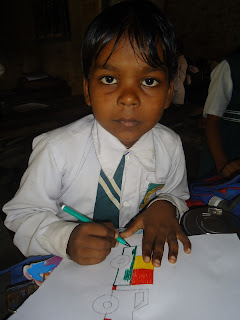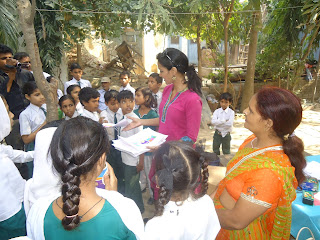“I am sick and tired of the rampant corruption in the country. I would like to start a school that will only teach students about the great revolutionary leaders of India that stood tall as they embodied the highest principles of honesty, integrity and public service. My dream is to produce 10 Bhagat Singhs a month” – a political activist in Rajgarh, Madhya Pradesh.
“I have heard China is a very prosperous country. I dream about going to China, so I can learn about the farming practices there and bring that information back with me to my village to share with other farmers” – a farmer in Jetpura Village, Madhya Pradesh.
“There are far too many young Indians with broken dreams. Forced into engineering, medicine or other mainstream professions against their will, their true inner talents in music, dance, the arts, or sports are completely quashed. My dream is to start a Foundation that would fund the dreams of Indians that dare to be different. I want to reignite the souls of the youth of this nation” – a 16-year old rapper and basketball player preparing for the IIT entrance exams in Kota, Rajasthan.

7 days. 7 cities. 700 dreams. Those were my instructions as I began an exciting road-trip, in January this year, across the interiors of India, from Bhopal to Jaipur, with a mission to lead a team of 9 dream catchers that would capture the hopes, dreams and aspirations of Indians from all strata of society. Armed with little more than a zealous interest in what makes Indians tick and an insatiable quest to make a difference, we set out to learn about the dreams of every seemingly ordinary man, woman and child we would come across. We wanted to know about the biggest dreams for their lives, but also transcend to larger spheres of influence by asking about their dreams for their communities as well as the country as a whole. Why? To help create the first of its kind qualitative database of dreams, a database that could be used by leaders in government, business and the development sectors to generate ideas that would support the realization of common dreams, be it through changes in public policy, development initiatives or enterprise solutions for new products and services to better serve the people of India. This is the Dream:In Project.

Much has been written about and talked about what Kishore Biyani would label “India 1” i.e. the top 10% richest Indians that have already “made it”, as well as the great emerging Indian middle class that already is and will continue to reshape the consumption patterns and the politics of the country. Their needs and wants are understandably of great interest to businesses and policymakers alike. Then, there is an almost invisible segment of Indian society, which incidentally constitutes a vast majority of Indians, whose needs are underserved at best, or at worst, overlooked completely. This is “India 2” that serves “India 1” as house-servants, drivers, cooks, security guards, shop-keepers etc. , and “India 3”, which is the rural poor of the country. When I embarked on this project, I wondered how much India 1 really knows about India 2 or 3. There is in India a large and perceptible divide between the haves and the have-nots. That divide is not merely an economic one; it is a deep psychological divide that often prevents the haves from relating to the have-nots. How much do you really know about your maid and the circumstances in her life that made her what she is? When was the last time you asked an auto driver or a street vendor what his or her aspirations were? Did you ever wonder if a poor farmer in a small village could have dreams with implications for the entire country? Yet, each of these individuals has a dream, which cannot be ignored. They need to speak in their own voice, and not always be spoken for. They need to be heard. They need to be seen. For, if we are to create an India of our dreams, we need to have a shared vision. If we are to have a shared vision, we need to understand the dreams and aspirations of all of our fellow citizens, so we can march towards a common reality. It is our common dreams that give us a common beat to march on. This is what I believe, and this is what motivated me to be part of the Dream: In project as a team-leader, dream catcher and dream scholar.
The brainchild of Spread, a vertical within Idiom, one of the largest and innovative design consultancies in India, the first phase of the Dream:In project had over 100 dream catchers, students with a design, management or communications background, cover the length and breadth of the country by road. Each team of ten consisted of one team leader and 3 sub-teams, each with a spotter, a reader and a framer. The spotter would spot the “dreamers” and engage them in a conversation to gently draw out their most cherished dreams. The reader would document the entire conversation in a journal, and the framer would capture the dream on film with a video camera.

Reflecting on our journey, several observations come to the fore. One, everyone has a dream. As we were to learn, it did not matter how rich or poor, or young or old one was, each had a dream. If they did not dream for themselves, they dreamt through and for their children. A poor farmer in Rajgarh told us that while he has come to accept the day-to-day drudgery of his life as a farmer, what excites him most is the thought of training his daughter to become an athlete so that one day she could compete in the commonwealth games.
Two, everyone likes to share their dream. We were amazed at the generosity and the hospitality with which we were welcomed every where we went as people invited us into their homes and into their lives, forming a deep bond with us in a matter of minutes as we enabled them to give voice to a dream they had been nurturing for a long time, but never had a chance to share before. Perhaps, no one had ever cared enough to ask. “No, thank
you”, said Ramu, a potter earning Rs. 300 a day from making and selling clay pots at the side of a street in Bhopal. So touched was he when we came to speak to him, that he ordered chai for all of us, worth Rs. 30. A small sum for us, to be sure, but for Ramu, it was 10% of his daily wages, yet he was adamant in not letting us pay for the chai. I wondered how many of us would spend 10% of our daily income on a stranger.

Three, the simple act of sharing one’s biggest dream is empowering for ordinary Indians. Each interview ended with the dreamer holding a slate identifying the dreamer by number and location, and looking straight into the camera to vocalize his or her dream. When Laxmi looked into the camera, and said, “My name is Laxmi and my biggest dream is become a doctor so that the people in my village don’t have to travel for an hour to go to the nearest health clinic”, with a quiet but powerful resolve, I couldn’t help but notice the glimmer in her eyes. Maybe that small act had given her ownership of her dream, and imbued her with the confidence that she can, indeed, go after her dreams with all the gusto that she can muster.

“Go farther, stay longer and come back,” were the words of wisdom I got from a development practitioner when I first landed in India, “if you really want to understand Indians and then come back and share those learnings with the rest of the world.” I now realize how true that is. It is incumbent upon us make the countless invisible Indians visible to the world by sharing their stories in their own words, their dreams as they see it, so we can realize a vision for India that is built from the ground-up.
As a next phase of the project, we held a Conclave in Bangalore in February. The Conclave included leaders from the government, business and the NGO sectors, all of whom were present with the singular goal of reading and synthesizing the dreams of Indians, and brainstorming ideas for transforming those into common, transformative and inclusive realities. For everyone involved with the Dream:In project, our shared dream now is to help realize the 50+ game-changing ideas that emerged from the Conclave, and take a small step towards creating the India of our dreams. To be continued…
Learn more about the Dream:In project
here.






































